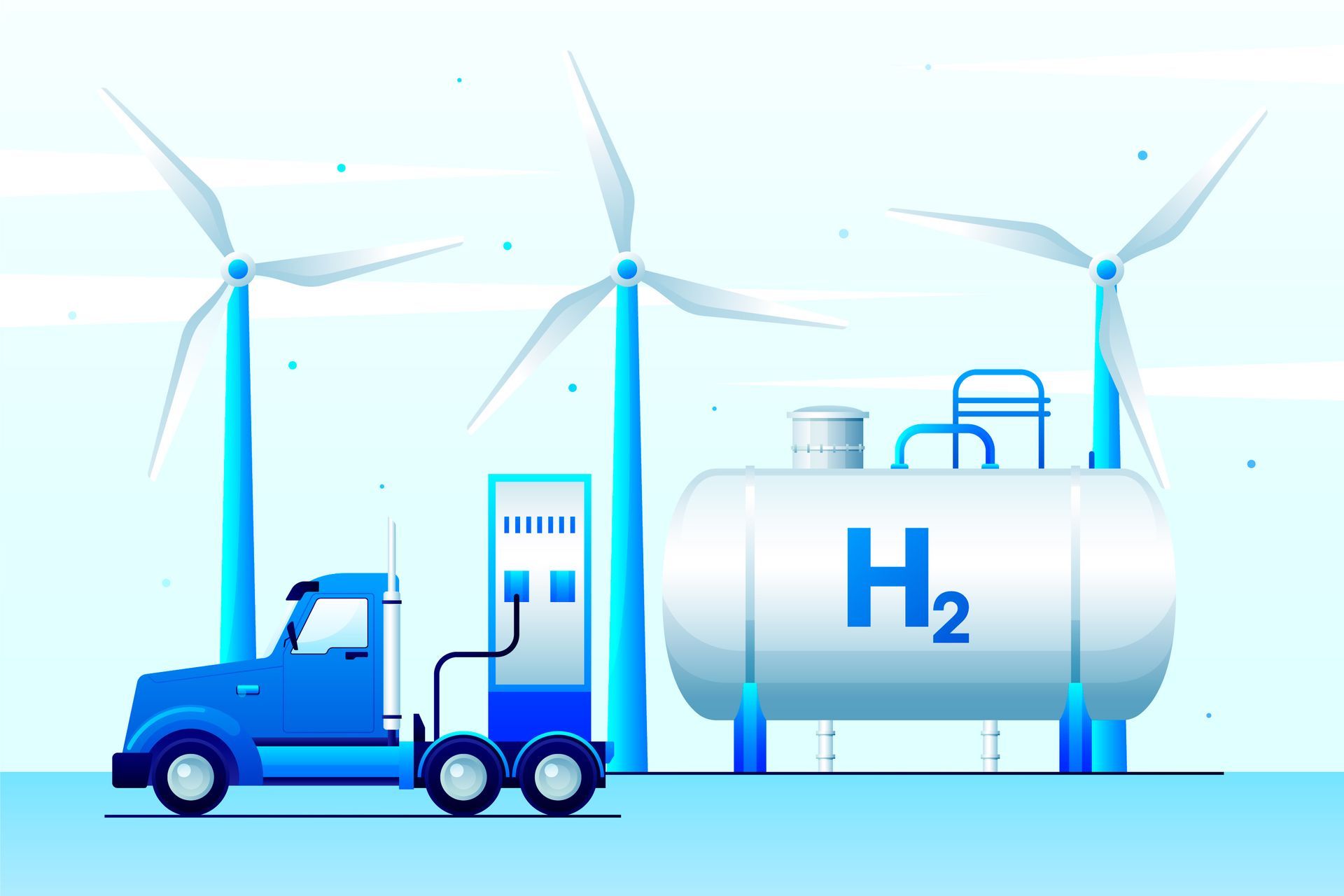An Uber for heat:: How a new platform can help industries reuse excess heat and meet decarbonisation goals

Mafalda Silva is a Senior Researcher at the Institute of Science and Innovation in Mechanical and Industrial Engineering (INEGI) at the University of Porto. She has a PhD in Sustainable Energy Systems and has participated and managed multiple projects concerning energy planning and sustainability. Since January 2022, Silva has been the coordinator of the EU-funded project
EMB3Rs. The project has developed a heat and cold matching platform that determines the costs and benefits related to excess heat utilization routes for the industry and end users.
______________________________________________________________________
How would you describe the EMB3RS project to someone who has never heard about it before?
I like to think of the EMB3Rs project as the Uber of excess heat. There is a lot of potential in reusing excess heat. On one side, in industry and beyond industry (e.g. services), there are a lot of excess heat producers that don’t know what to do with this energy. On the other side, there is also a lot of demand, often nearby, for this excess heat. But the supply and the demand are not aware that the other side exists. EMB3Rs aims to bring these two sides together and present the best solutions to recover, transport, and reuse excess thermal energy.
And how is the project achieving this?
We created an online platform capable of evaluating multiple scenarios and assessing their viability, both technically and economically. For example, let’s take a ceramics factory within an industrial park. The production process generates excess heat that could potentially supply hot water to another factory within the park. Using the EMB3Rs platform you could evaluate the feasibility of reusing this excess heat within the park and which would be the best route to do so. And what makes the platform particularly unique is that it identifies the best path to use excess heat in an integrated way, for instance, considering the physical dimension (where the energy provider and consumer are located, resource available, etc.), the techno-economical dimension (how much it will cost, what technologies would be needed, etc.), but also a market and business models perspective.
To do this the platform must feed on a lot of information, where does all this information come from?
Part of it is provided by the user who has to introduce some input, particularly information both for the heat supply (sources) and demand (sinks), so that the platform can provide tailored solutions. For example, if you are a source of excess heat, you need to have an idea of how much excess heat you are producing and to whom this heat could go. If you require excess heat, then you would have to look for industries around you as potential providers of this excess heat. The other part of the information is coming from a database embedded in the platform itself. This way, if there are very specific parameters that you don’t know, the platform can retrieve them from the database and still provide a solution. Of course, having precise input data generates more accurate solutions, but using default data can give you a general idea and once you have measured those specific parameters you can run the simulation again and get a more tailored solution.
You have been using industry as an example, is that the only sector that can benefit from the EMB3RS platform?
Industry itself is a clear stakeholder since it is an obvious producer of excess heat, and it has a lot of potential to reuse it. Especially now with increasing decarbonisation targets and the recent escalation of energy prices, reusing excess heat is certainly something that industries around Europe may want to explore. But it is not the only one. For example, if local or regional authorities are interested in planning the investment needed into new infrastructures and policies within the energy sector, they can also benefit from our platform. Another beneficiary is academia; for example, the platform can be used for research and teaching, as a tool to help solve complex problems or as part of academic courses such as PhDs or Masters.
What was the biggest challenge when developing the platform?
The platform integrates different components and modules, each responsible for a different task (for example, identifying least-cost solutions and technologies) that then come together as a whole platform. The challenge was that these modules involved different stakeholders and were developed by different partners. This meant that they were being created individually and we then had to integrate them so that they would be able to communicate with each other and work as a whole. And this whole process was made even more difficult by the pandemic when we suddenly had to move everything online from one day to the next.
The EMB3Rs project is ending soon, what happens with the platform then?
We’re discussing the exploitation plan for the whole platform. We would like it to be used as much as possible by the different target stakeholders and hopefully become a reference tool in the field. The platform will remain available and accessible online at least over the next five years.
We have also created several resources to support its continued use, such as manuals and a video tutorial that will be accessible through the project website once they are approved by the European Commission.
We would also like to continue developing and improving it, and make new versions. In fact, that’s one of the advantages of the platform being open source; anyone can access the code and tailor it to their needs, adding functionalities and helping it evolve.
In the meantime, we hope that it becomes more and more renowned. This will lead to stakeholders being aware of it and it will give us some structure to keep it alive beyond those five initial years.
Author: Dàlia Puig
More articles!

By EuroScientist Editor
•
07 Sep, 2023
Hydrogen fuel can be made from wood waste in a clean and cost-efficient way at heat and power plants – and its developers hope it could change the narrative around this sometimes-controversial solution. By Steve Gillman & Fintan Burke The costs of scaling up hydrogen power, along with the potential amount of energy and natural resources to produce it, have seen this fuel source face increased scrutiny as a solution against climate change. “The majority of our electricity and hydrogen is produced from fossil fuels. This, of course, is not sustainable as it contributes to climate change,” said Michael Bartlett, a founder of Phoenix Biopower, a company that turns natural waste into combustible gas, like hydrogen. As part of a research project called Bio-FlexGen, Bartlett is developing ‘green hydrogen’ from biomass waste from the forestry sector. “Our ultimate goal is to provide a secure, renewable and low-cost energy for society and industry,” he adds. Bio-FlexGen, and its multidisciplinary team of 14 partners from five EU countries, aim to provide the technology for combined heat and power plants (CHP) that can also generate a supply of green hydrogen in addition to usual outputs of electricity and heat. To make green hydrogen, Bio-FlexGen will use a combination of two main technologies – a gas turbine and a gasifier. First, waste biomass is added in a gasifier at pressure and heated up to 850 Celsius – a temperature so hot that it releases other gases, mainly hydrogen, methane, and carbon monoxide. The next step sees water and steam added to cool before it passes through a cleaning filter. “Once we have cleaned up the gases from the gasifier, we can either send it to the gas turbine for combustion and electricity generation or to a hydrogen production unit,” said Bartlett, adding that this process gives “enormous power” and efficiency to the CHP plant. The high temperatures of this process, over 1400 Celsius in the gas turbine combustor, also result in greater power generation. To ensure a high efficiency, the system is designed to gather waste heat and recycle it back into the gas turbine in the form of hot steam. This, Bartlett says, can result in double the electricity output that is typical for a given amount of biomass. The new approach means the CHP plant then has three modes of operation; 1/ produce heat and electricity efficiently from biomass in the winter 2/, produce green hydrogen and biogenic CO2 from biomass in the summer 3/ utilise hydrogen in the gas turbine for peak power. This flexibility means it can help keep costs low and stable and complements the hourly, weekly and seasonal variability of solar and wind power. Converting critics and pushing EU hydrogen plans ahead Bio-FlexGen’s systematic approach to incorporating green hydrogen could go a long way in negating the main arguments against this renewable energy, primarily the amount of natural resources it requires for its production. According to Rystad Energy, 620 million cubic meters of water are needed to produce 85% of the green hydrogen capacity planned for 2040. However, environmental groups like Greenpeace argue that renewable power alone is not enough to produce the needed amount of green hydrogen. If anything, they claim this may end up increasing fossil fuel demand. But Bio-FlexGen’s green hydrogen production utilises oxygen to drive the gasification process, itself a by-product of green hydrogen production from wind and solar power. “The main advantage of getting hydrogen from biomass compared to wind or solar is that it has less variability and is not dependent on electricity price,” said Bartlett. “It also requires less H2 storage (you store biomass instead) for when the wind doesn't blow.” When producing electricity from biomass in the CHP plant, a lot of steam is needed in the gas turbine for the best effect. In fact, 50% of the exhaust is just water vapour. This water is recovered, treated and recycled back to this process, and an excess of clean water can even be produced for other consumers. When this water is recovered, it also generates large amounts of heat, which the project can use further in district heating networks or other processes. In this way all the energy in the biomass is efficiently used. “We are working very hard to ensure that we are part of a circular biomass utilisation and that we are using hydrogen in the safest possible way,” explains Bartlett, adding that the project will make a “significant contribution to the decarbonisation of the energy system”. The first commercial plant using Bio-FlexGen’s approach is planned for 2030, in which the power plant will operate on biomass in the winter months and use 100% green hydrogen in the summer months, therefore displacing demand for fossil fuels in peak periods – a goal increasingly shared by EU policymakers. Following the war in Ukraine, and the embargo on Russian oil imports into the EU, the European Commission outlined a ‘Hydrogen Accelerator' concept to scale up renewable hydrogen deployment. This ‘REPowerEU Plan’ wants the EU to produce 10 million tonnes of renewable hydrogen by 2030, with the Commission recently proposing criteria that Member States can follow to ensure they produce green hydrogen, including that it only be produced when and where sufficient renewable energy is available. As BioFlexGen’s power plant will operate with up to 100% green hydrogen from solar and wind, with an optimised combination of bioenergy, it is already on course to meet these criteria. Bartlett also believes that the project has brought together “amazing, competent people” that can play a key role in developing green hydrogen further.

By EuroScientist Editor
•
07 Sep, 2023
Author: Jane Marsh Scientists are researching a theory known as positive climate tipping points. While most people talking about tipping points concentrate on their negative consequences, such as irreparable harm to ecosystems, positive tipping points provide a ray of hope. These points may result in favorable and constructive changes to our planet's climate system as the effects of climate change continue. Learn more about the idea of positive climate tipping points, consider their possible advantages and discuss their significance in understanding and tackling the problems caused by climate change. Understanding Tipping Points To fully understand positive climate tipping points, it is essential first to understand what tipping points are. Tipping points are key thresholds in a complex system where a minor change can cause significant and sometimes irreversible changes in the system's behavior. Harmful climate change tipping points may be the first type that comes to mind. These relate to occurrences like the melting of significant ice sheets or the disruption of essential ocean currents, which can have quick and harmful repercussions. However, there are also positive tipping points that may shape the future climate. Positive Climate Tipping Points Unlike negative climate tipping points, positive ones can increase ecosystem resilience and bring about encouraging changes. These turning points take place when certain environmental activities or changes trigger self-reinforcing mechanisms that improve the earth's capacity to absorb carbon dioxide, lower greenhouse gas emissions or support the preservation of vital habitats. Forest preservation and restoration is one illustration of a favorable climate tipping point. As forests grow and recover, they sequester a greater amount of carbon dioxide, which lowers the levels of greenhouse gases in the atmosphere. This process creates a positive feedback loop that encourages greater forest development and improves the ability of these ecosystems to control the temperature. Relevance and Implications of Positive Tipping Points Positive climatic tipping points must be recognized and utilized for mitigation and adaptation initiatives to succeed. Scientists and decision-makers can create targeted interventions to improve the planet's resilience and lessen the effects of climate change by identifying and utilizing these tipping points. Climate tipping points can also encourage and inspire group action. They provide concrete instances of how individual and group activities, such as reforestation programs, sustainable land management techniques and ecosystem restoration projects, can significantly contribute to the fight against climate change. The general public may take inspiration in carrying out sustainable behaviors or supporting laws that help effect positive change. Emphasizing these positive tipping points' potential advantages and ripple effects encourages individuals at all levels. While positive climate tipping points have great potential, it is important to recognize that our understanding of them is still developing. Further research is necessary. These tipping points require identification, monitoring and measurement, which demands continual study and scientific cooperation. Scientists use advanced modeling approaches and thorough data analysis to find potential positive tipping points across different ecosystems. Researchers are also looking into how positive and negative tipping points are connected. Scientists can create comprehensive plans to negotiate the intricacies of climate change and maximize beneficial results by thoroughly comprehending the relationships between these tipping points. Positive Climate Tipping Points Could Be a Game-Changer Positive climate tipping points demonstrate optimism in the fight against climate change. If people locate and utilize these tipping points, we may be able to develop self-reinforcing mechanisms that positively affect our planet's climate system. Scientists, decision-makers and people can take proactive measures in climate change prevention and adaptation by comprehending the significance of positive tipping points and their potential ramifications. The complexity of positive climate tipping points must be further understood through ongoing research and monitoring projects to successfully navigate the challenges of climate change and create a more resilient and sustainable future.

By EuroScientist Editor
•
18 Jul, 2023
It’s no secret that the planet is getting warmer, but July 2023 saw record-high temperatures that really turned heads. 2023 is an El Niño year — in addition to human-caused climate change, the Earth is undergoing an expected cycle of exceptionally warm weather that occurs every few years.
This double whammy has many people reaching for their water bottles and cranking up the AC. Why are scientists so worried about the heat?

By EuroScientist Editor
•
03 Jul, 2023
Hydrogen fuel cells have garnered a lot of attention recently. As the global conversation shifts to emissions-free energy, many people want to know how fuel cells work, whether they could replace internal combustion engines someday and if they can power homes. Here are answers to common questions about the technology.

By EuroScientist Editor
•
26 Jun, 2023
Refined predictions, accurate prescriptions, supported physicians, reduced disease chance and increased intervention opportunities are all benefits of precision medicine. It improves health care for patients and professionals through proactive and predictive measures.


